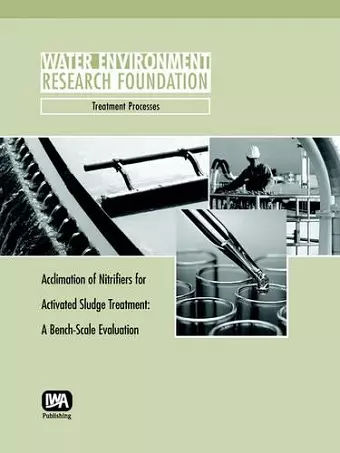Acclimation of Nitrifiers for Activated Sludge Treatment
A Bench Scale Evaluation
Robert A Zimmerman author Andrew T Bradshaw author Don Richard author
Format:Paperback
Publisher:IWA Publishing
Published:30th Jun '04
Currently unavailable, and unfortunately no date known when it will be back

Nitrification kinetics were evaluated in bench-scale batch reactors fed with a synthetic wastewater containing approximately 1,000 mg ammonia-nitrogen (NH3-N)/L operated at 5, 10, and 20 day solids retention times (SRTs) and with dewatered biosolids supernatant (1,126 to 1,680 mg NH3-N/L) operated at a 20-day SRT. For the 5- and 10-day SRTs, complete nitrification appeared to be inhibited by the presence of un-ionized ammonia and un-ionized nitrous acid. For the 20-day SRT, near complete nitrification was observed for both substrates. Observed ammonium oxidation rates decreased with increasing SRT. Observed yield coefficients were similar for all SRTs and substrates. Fully established steady-state conditions were observed at higher SRTs despite process start-up and operational considerations. Although it may be possible to culture a nitrifier population capable of near-complete nitrification at lower SRTs, the design configuration and operational strategy must mitigate the potential for un-ionized ammonia and un-ionized nitrous acid inhibition (e.g. process start-up at lower concentration with gradual increase to higher concentration, continuous feed operation, etc). Batch bioaugmentation analyses were conducted in the mixed liquor suspended solids and final clarifier effluent from a non-nitrifying activated sludge with seed nitrifiers developed from the 20-day SRT reactors and with biomass from a nitrifying trickling filter facility. Ammonia removal was observed in all bioaugmentation analyses with no apparent lag or acclimation period. Observed ammonium oxidation rates were not significantly different between the seed and batch bioaugmentation reactors. Acclimation does not appear to be a critical obstacle for nitrifier bioaugmentation when environmental conditions (e.g. temperature, pH, etc.) between the seed and bioaugmentation processes are not significantly different.
ISBN: 9781843396918
Dimensions: 234mm x 156mm x 18mm
Weight: unknown
71 pages